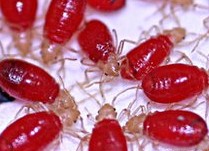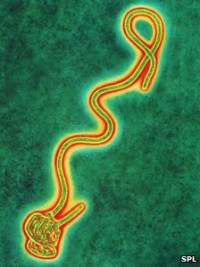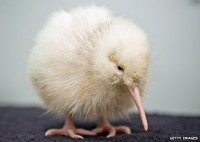In such a rapidly shifting industry, it’s hard for anyone to keep tabs on employment opportunities; weary and overwhelmed by experiments, graduate students and postdocs can find themselves completely overmatched.
It is easy to feel despondent when, in the United States alone, the pharmaceutical industry has shed more than 300,000 jobs since 2003, according to Challenger, Gray & Christmas. Yet, even as redundancies continue to make headlines, there are openings for aspiring biotech and pharmaceutical scientists. Those opportunities, though, may not be where they used to be, nor are the risks, incentives, and demands early-career scientists face the same as those of a decade ago.
Who will emerge as the major drug discoverers in the next decade? How can you join their ranks? Science Careers asked scientists from industry and academia to offer tips for those looking to enter the job market in the coming years.
The new world of pharma
One of the most important drivers of change in the pharmaceutical industry was a wave of patent expirations that really picked up steam in 2010. Employees felt the impact of this a decade before, as companies anticipated the drop in profits. By the end of 2012, three dozen of the world’s top brand-name drugs had lost patent protection, paving the way for cheaper generic versions. The ensuing competition among drug companies is estimated to have eroded 90% of top drug companies’ annual U.S. sales.
To make up for these losses, the larger pharmaceutical companies sought savings by cutting R&D departments, which traditionally have eaten up a big chunk of the industry’s spending. To compensate, companies, in effect, outsourced early-stage research to smaller specialty pharmaceutical and biotech companies.
The result: Startups are the big recruiters now, says Richard Bozzato, a senior adviser for MaRS Discovery District in Toronto, Canada, a nonprofit that aims to foster relationships between scientists, venture capitalists, and industry. Oncology and neuroscience are the fields most actively hiring, he adds.
David Lowe, CEO of Aeglea BioTherapeutics, a 1-year-old company based in Austin, Texas, agrees that startups are where the jobs are. Lowe, who took his first job with Genentech in San Francisco, California, almost 30 years ago, when it was still a relatively small company, says that companies today have a different set of needs than when he began. Much of today’s drug discovery focuses on biologically sourced drugs as opposed to chemically synthesized ones.
Because many of the new drugs are ‘biologics,’ developed from the cells of microorganisms, plants, and animals, today’s industry is recruiting more life scientists. “No one studies entomology anymore,” but entomology could be hugely valuable to drug discovery, Lowe says.
Be collaborative and interdisciplinary
Another trend: Small companies are looking for collaborative scientists. Collaboration is “anathema to a lot of scientists, particularly young ones,” Lowe says. In graduate school, “you are supposed to be chief cook and bottle washer on all your own stuff.” Most graduate students are still trained to work independently, to value ownership of their work that leads to primary authorship on articles published in prestigious journals—a major key to success in academia. Scientists employed at large pharmaceutical companies traditionally worked in silos, too, but collaboration is essential for those who wish to thrive in the startup environment.
George Georgiou, a chemical engineer at the University of Texas, Austin, says that industry values people who are not just collaborative but who can work in an interdisciplinary way. Georgiou has mentored 48 students since setting up his lab in 1986; 12 of them have ended up in the industry. He attributes this success, in part, to running a diverse group including chemists, biochemists, molecular biologists, and chemical engineers—and encouraging his team to have a healthy respect for all those disciplines. The result, he hopes, is students who aren’t intimidated by other fields and who understand the jargon used in those fields.
Another advantage of working with such a mixed group is that students have a better understanding of the whole drug-development pipeline. “What I think distinguishes my students from those of other labs is that my students understand not just whether a molecule does what it is meant to do, but … how one might manufacture it,” Georgiou says.
Risks and incentives
Working in Georgiou’s lab was good preparation for industry, says Tom Van Blarcom, a research scientist with Rinat Laboratories in San Francisco, California. Van Blarcom earned a Ph.D. in chemical engineering in 2008 and took a position at Rinat, which develops protein-based therapeutics; Rinat was acquired by Pfizer in 2006 but was allowed to keep operating as an independent biotechnology unit. Van Blarcom was attracted to industry because of the speed with which he could get things done there. “I don’t have to prepare my own media [or] pour my own plates,” he says, nor does teaching cut into his research time. Another advantage of industry, Van Blarcom says, is that young scientists there have access to a larger number of mentors.
Industry also means more diverse employment opportunities for scientists, including for two-scientist couples, as long as they’re willing to settle near a pharma-biotech hub. “I didn’t want to end up somewhere where there [was] only one fulfilling career option in town,” Van Blarcom says—so he and his partner, Diana Van Blarcom, settled in the San Francisco Bay area, a hotbed of pharma and biotech companies, including many startups.
That’s important because layoffs are part and parcel of the new pharmaceuticals industry. “It’s rare for someone to stay at the same company for their entire career,” Van Blarcom says, and there is security in knowing that there is probably another opportunity close by.
Got the skills, get the job
Van Blarcom believes that his interviewing technique helped him get the job. “When I showed up to my interview I was very prepared,” he says. He had read a handful of papers from each of the people he hoped to meet with, so he could converse about their work in more depth. Coming from Georgiou’s lab also helped him, he thinks, because Georgiou’s work is known for having a strong therapeutic bent: With 29 issued patents, more than half licensed to pharmaceutical and biotechnology companies, Georgiou has close ties with industry. “Having that track record from my [graduate adviser] definitely got my foot in the door,” Van Blarcom says.
At Rinat, Van Blarcom focuses on designing, building, and using sequence libraries to discover more effective antibodies. These libraries consist of sequences based on antibodies found in hundreds of people; Van Blarcom uses his bioinformatics knowledge to curate this data. “People could really have a leg-up on the competition if they are proficient in R or Perl,” he says. New sequencing technologies are generating so much data, he says, that automation is becoming essential, so suitable coding skills are becoming indispensable.
An implementation impulse
Van Blarcom says the decision to join Rinat instead of pursuing a university position was philosophical. He sees industry as a place to “produce tangible results,” while academia is more a breeding ground for big ideas. “I never thought I was the type of person that would come up with ground-breaking ideas; I was more of an implementer, so [industry] seemed to be … a natural fit for me.” In industry, he says, success is unlikely to come in the form of a Nature or Science paper but as a chance to develop a drug that ends up helping patients’ lives. “[That’s] ultimately a lot more powerful than another publication,” he says.





